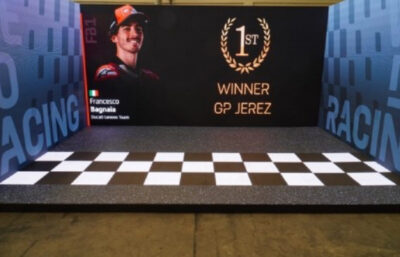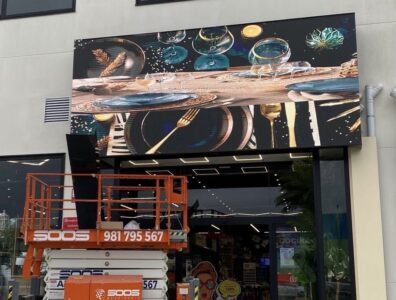In recent years, virtual shooting technology has launched a revolution in the film and television industry, and LED walls, as the core device of this technological change, are redefining our understanding of film production. From “The Mandalorian” to various Hollywood blockbusters, LED wall technology is no longer a new thing, but its application potential is far from being fully tapped.

The core role of LED walls in virtual shooting
Although traditional green screen shooting is mature, there are many pain points. When an actor performs against a green wall, it is difficult to find a real emotional input point, and the effect of the later synthesis often seems unnatural enough. The emergence of LED walls has completely changed this situation.
Through the LED wall, the production team can display the background environment of the shooting scene in real time, and the actors can see the real sky, buildings or any required scene. This immersive shooting environment makes the performance more natural and realistic. At the same time, the light emitted by the LED wall will naturally illuminate the actors and foreground props, reducing a lot of post-color tuning and light-shadow matching work.
Key technical requirements
To effectively use LED walls in virtual shooting, the selection of technical parameters is crucial. First of all, the pixel density. Generally speaking, the distance between P2.6 and P1.9 is more suitable for close-up shooting. If it is too rough, the camera will take obvious pixel points, which will affect the final effect.
Refresh rate is also a problem that cannot be ignored. The refresh rate of ordinary LED screens may be only a few hundred Hz, but virtual shooting requires a refresh rate of at least 3840Hz or above, otherwise there will be obvious flickering stripes when shooting. This parameter is often ignored, but it is a key factor in determining the quality of the shooting.
In terms of color accuracy, LED walls need to support wide color gamut display, which usually requires coverage of more than 70% of the Rec.2020 color space. Brightness control is also important, and requires the ability to adjust flexibly between 500 and 4000 nits according to shooting requirements.
Challenges and solutions in practical applications
Although LED wall technology sounds perfect, it still encounters various problems in actual applications. The most common one is the molar phenomenon. When the camera’s photosensitive element interferes with the pixel arrangement of the LED screen, corrugated stripes will appear on the screen. Solving this problem usually requires adjusting the camera’s angle, focal length or using a special optical filter.
Another common problem is color matching. There may be differences in the color displayed on the LED wall and the final rendered picture color, which requires a professional color management system to ensure consistency. Many production teams have suffered losses in this link, and the results look good during shooting, but the final synthesis of the picture is completely wrong.
Temperature control is also a practical problem. LED walls work for a long time and generate a lot of heat. If the heat is not dissipated well, it will not only affect the life of the equipment, but may also cause color shifts. Professional virtual shooting sheds usually require industrial-grade air conditioning systems.
Cost-benefit analysis
Many people think that the initial investment of LED walls is too high, but in the long run, its economic benefits are still very obvious. Traditional shooting requires the construction of real scenes, outdoor scene shooting, and a large number of post-synthesis, which add up to a lot of costs. LED walls can complete the shooting of most scenes in the shed, saving appearance costs, weather waiting time, and reducing post-work.
LED walls are almost a necessity for production companies that often need to shoot science fiction and fantasy themes. A high-quality LED wall system can be reused for many years, and the cost of amortization on each project is actually not high.
Practical suggestions for choosing LED walls
If you are considering introducing LED wall technology, it is recommended to first clarify your main application scenarios. If you mainly shoot commercial advertisements or short videos, the P3.9 LED wall is enough and the cost is relatively low. If you want to shoot movie-level content, you have to invest in P2.6 or higher precision products.
Don’t just look at the parameters, actual testing is very important. With the same technical indicators, the product performance of different manufacturers may be very different. It is recommended to look at the actual cases more. If possible, it is best to go to the site to experience the effect in person.
Thank you for watching.



